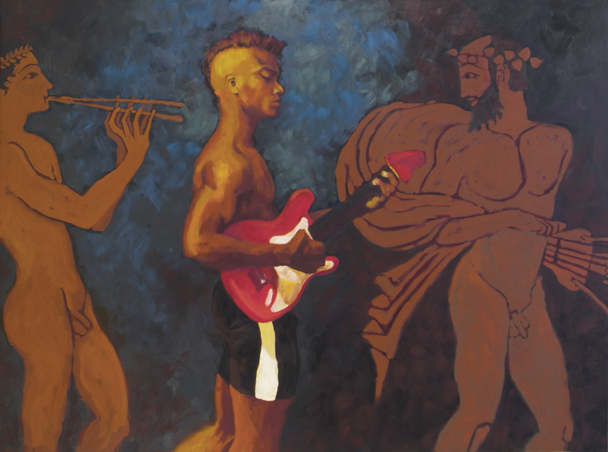
Late last year I was interviewed by the New Rochelle Council on the Arts. They asked various questions about my art practice and, themes and how I draw inspiration for my work. NCRA is currently sharing my interview and those of other artists on their Facebook page (find them here!) and I thought it would be fun to share a couple of my pull quotes from the interview. Both photos here were taken by the wonderful photographer Rodney Bedsole and the interview for NCRA was conducted by Mellisa Riebe. Thanks Melissa!
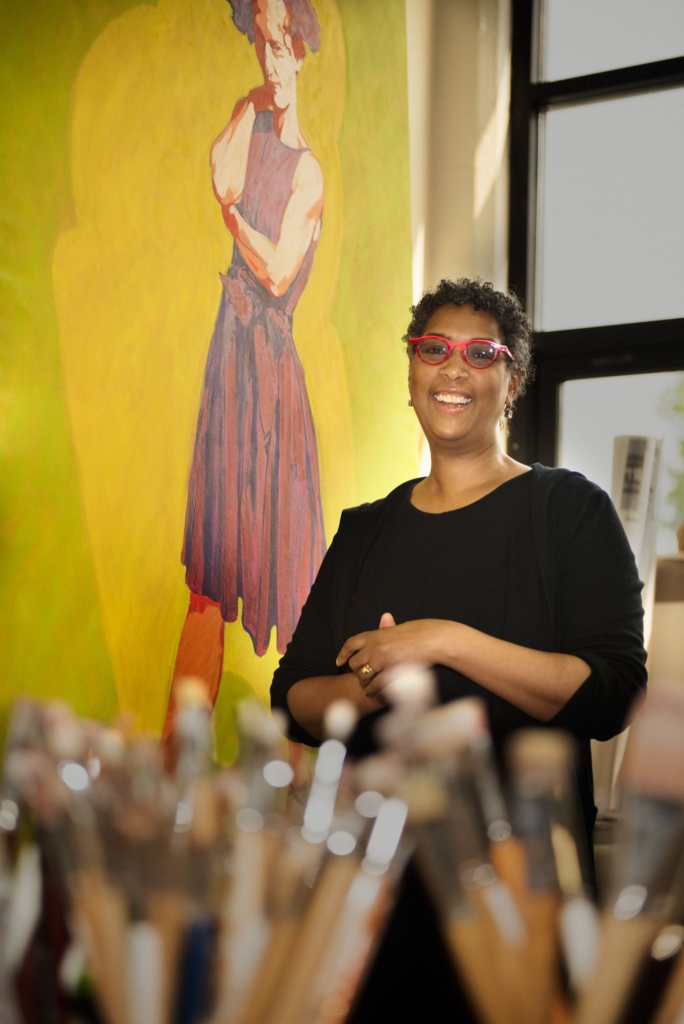
“Art is what I am. It is the definition of me, artist.”
-Marie Hines Cowan, artist, NRCA member
“I see everything in terms of color and form. I don’t think in words. I think in pictures. It is like, I am a terrible speller because I don’t think or see a word made up of letters. I see a word made up of images.”
-Marie Hines Cowan, artist, NRCA member
“Use the biggest brush possible. So you don’t get fiddling into the details before you have gotten the larger picture there. Paint what you see, not what you know. Because if you are just painting what you know, you are not really seeing what is there.”
-Marie Hines Cowan, artist, NRCA member
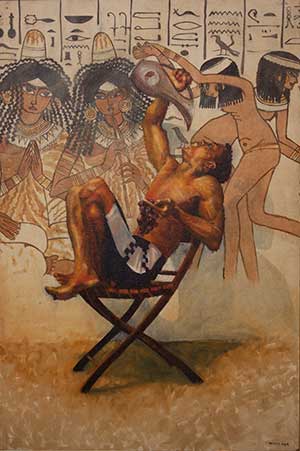 A Muse Continues to Sing.
A Muse Continues to Sing.
I was in the studio the other day involved in an end of the year clean up when I came across one of my early paintings from the eighties called, You Pagan (right). As an aside you might notice that this model, one of my few male models, has been in two other paintings (Red and Black Amphorae, Cartoon for the Sistine Chapel Ceiling, click titles for links) and I am currently working on a third using him.
Anyway, in this painting, which seems to be somewhat off my usual subject, the background motif being Egyptian rather than Greek reminded me of one of my favorite authors who passed away a couple of years ago, Elizabeth Peters (though I must note here that I have at least a hundred favorite authors). She also wrote under the name of Barbara Michaels and Barbara Mertz, and was an Egyptologist with a long running and very humorous series about a family of archaeologists working in Egypt from the Victorian period through the First World War.
I think of her now not only because of my painting but also because of The New Yorker article, “What’s in a Muse?,” which I recently discussed on this site in one my Artist’s Notes. In it, Anna Heyward reflects on the status of Isabelle Mége as an artist vs muse. Elizabeth Peters was a literary artist but, upon reflection, also a muse. She inspired other literary artists and after her death her characters took life in other’s novels. I ran across characters from her Egyptian series on the pages of novels from two other of my favorite authors, Mercedes Lackey and Tasha Alexander. It is a delight for me to know that despite the fact that Elizabeth Peters can no longer set down new stories she continues on as a muse and her characters continue to live and evolve in the art of others.
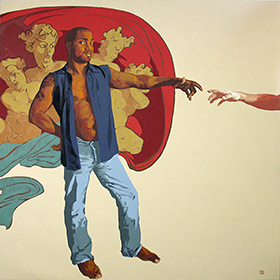
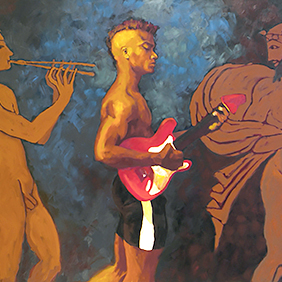
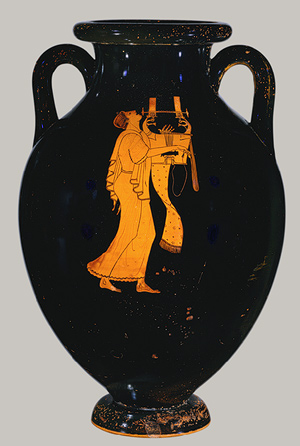 I’ll tell you how it started.
I’ll tell you how it started.
Standing in a shaft of light
I had a Delphic moment.
Feeling like Ovid or Homer
or perhaps Andy Warhol
I said, “O sing Muse”
sing of a time when
gods walked the earth like mortals.
And with my words they did.
The muses sang and
the gods walked.
Now my muses haunt my studio
dogging my steps
and offering recriminations
if I venture out of it.

NY Muse, my latest project, is inspired by both Greek mythology and our current culture. The works in this project find their inspiration from many sources including: a Public Works project, Dr. Seuss, the doomed Edie Sedgwick (an Andy Warhol associate), a Vogue magazine fashion photo spread, Jimi Hendricks, and the New York Public Library lions.
The Neoteric poets* wrote about their culture in a colloquial manner — yet with allusions to the classics — expecting their readers to enjoy the work on many levels. My work, which I describe as Popteric*, marries colloquial and classical, traditional painting and installation, and my intention is that my viewers also enjoy it in its many dimensions.
The premise of NY Muse is that standing in my studio one day, I said the fatal words of the ancient poets: “O sing Muse.” They did, and I was inspired. NY Muse is the result. Like Ovid’s Metamorphosis, the project is comprised of many small stories. These stories feature re-workings of original myths alongside newly created myths involving the Greek deities and mythological personae, set against the backdrop of New York City. As an artist, I see these new myths first as “ekphrasis”* developed into paintings, and then morphed into literature and installation.
*Popteric is a word I invented to describe the linking of the Classics with pop culture of 1970’s New York City.
Neoteric poets: Ancient Roman writers including Ovid and Catullus; Ekphrasis: an ancient Greek word meaning “picture phrase.”

